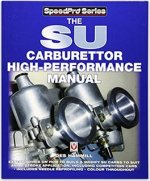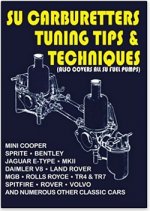Offline
The dirty little secrete on SU carbs is that different cams ,pistons and valves WILL require
a trip to a professional tuner. He will select from the dozens and dozens of available needles
a profile that gets you into the ballpark where you can THEN fine tune it to your driving needs.
All else is guess work and will NEVER get you where you need to be. This should be done on a chassis
dyno for optimum results......
With patience, needle reprofiling can be done off the dyno with a series of road tests (I never got into it). Des Hammill explains how. This book is interesting reading for anyone who wants to super-tune their SUs or understand them better - available from Moss or Amazon:


The second book available from the same sources has step-by-step instructions for rebuilding the various SU series, as well as good chapters on function.
FWIW - my Healey runs HD8s with a 278 degree fast road cam, high-lift rockers, some porting and .060" overbore forged pistons with dual O2 meters and a dual exhaust-temp gauge*. Originally I went to the Moss rich needles, but went back to the standard needles. The car still shows air/fuel ratios in the 12s for power and the 13s for cruising. This is in line with what Hammill recommends.
*So I like science projects.
Soon, I'll be installing O2 meters on the TR6 - want to see how the ZS carbs read before switching to the SU HD6s.**
**Don't take this wrong - I don't actually think they're going to give a power increase over the ZS carbs. I have them on the shelf from the Healey and think it would be interesting and easy to install them and see how they run. Another science project.

 Hi Guest!
Hi Guest!

 smilie in place of the real @
smilie in place of the real @
 Pretty Please - add it to our Events forum(s) and add to the calendar! >>
Pretty Please - add it to our Events forum(s) and add to the calendar! >> 

